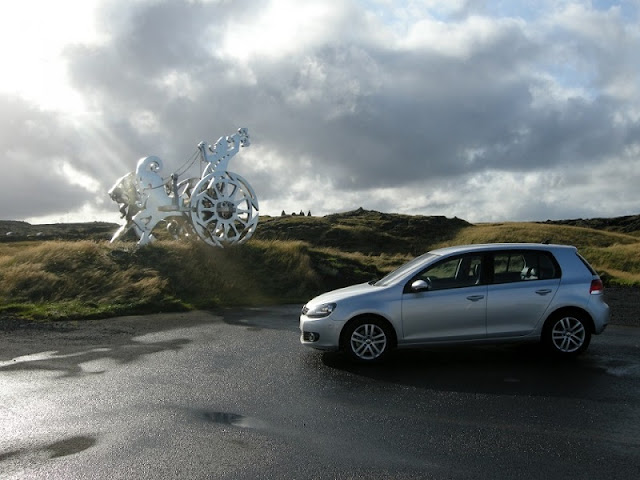Art and Literature of Iceland
Just over a hundred years ago, the first Icelandic painters graduated from the Royal Academy of Fine Art in Copenhagen. Of this generation of painters, Jóhannes S. Kjarval is perhaps the best known. His contemporaries include Þórarinn B. Þorláksson, Ásgrímur Jónsson, Jón Stefánsson and Kristín Jónsdóttir. Well-known Icelandic artists of the past few decades are Louisa Matthíasdóttir and Nína Tryggvadóttir who both worked in America. Other artists of that period include Gunnlaugur Scheving, Gunnlaugur Blöndal, and Þorvaldur Skúlason.
Iceland has a variety of museums and art galleries, such as the National Gallery of Iceland that features primarily 19th and 20th century Icelandic art.
Statues in Downtown:
Pallas Athena - A Greek goddess of wisdom, situated in front of Menntaskólinn í Reykjavík.
Ingólfur Arnarson - The first man to settle in Iceland, situated on the top of Arnarhóll.
Hannes Hafstein - The first Prime Minister of Iceland, situated in front of the Government Offices of Iceland.
Christian IX King of Denmark and Iceland, 1863-1906, situated in front of the Government Offices of Iceland.
Ingibjörg H. Bjarnason - The first woman to have a seat in the Icelandic parliament, from 1922-1930. Situated in front of The Icelandic Parliament House.
 |
| A sculpture of an unknown god, Photo by Olga |
Literature of Iceland
Iceland has a long and celebrated history of literature, with the City of Reykjavík being made a UNESCO City of Literature in August 2011. The invaluable heritage of Icelandic literature can be traced back to the Vikings, who passed stories and poems on by oral tradition, until it was committed to calfskin manuscripts in the early 12th century. An important historic text is the Edda, a collective of two medieval Icelandic literary works, containing the Prose Edda and the Poetic Edda.
Together these provide an extensive resource on Norse mythology and are a comprehensive body of ancient, heroic legends. Equally important in medieval literature are the Icelandic Sagas, such as Njál’s Saga and Laxdæla Saga, characterized by epic accounts of conflicts, feuds, love and fate.
Halldór Laxness (1902-1998) is a well-known Icelandic writer from the 20th century and was awarded the Nobel Prizevfor Literature in 1955. His incredibly diverse oeuvre spans an enormous range of literary forms, although he is best known for novels such as Independent People and Iceland´s Bell. With the ascent of Laxness, Icelandic became a language of world literature once again, as the Academy acknowledged when it awarded him the Nobel Prize “for his vivid and epic power which has renewed the great narrative art of Iceland”.
Currently, Iceland has many exemplary writers whose works have gained interest both in Iceland and overseas. Sjón is a celebrated Icelandic poet, novelist, lyricist and a playwright. He is known for his unusual and quirky style, such as in Skugga-Baldur (The Blue Fox) that has been translated into several languages and awarded the Nordic Council´s Literary Prize. In crime fiction, Arnaldur Indriðason is one of Iceland´s most celebrated authors, and has written many stories, such as Mýrin (Jar-City) that was adapted into a film in 2016. Another well-known writer is the award-winning novelist Yrsa Sigurðardóttir, known for her crime and ghost stories. Her novel,vÉg man þig (I Remember You), has been made into a feature film which was released in May 2017.
To celebrate this historical literary tradition, the city has hosted the Reykjavík Reads Festival since 2012, to celebrate reading for all ages.
No comments:
Post a Comment
You can leave you comment here. Thank you.